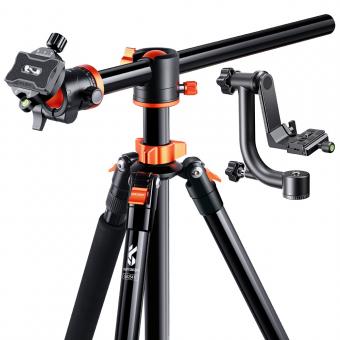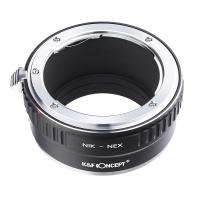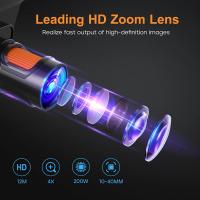What Is The Most Powerful Type Of Microscope ?
The most powerful type of microscope is the electron microscope. It uses a beam of electrons instead of light to magnify the specimen, allowing for much higher resolution and greater detail. There are two main types of electron microscopes: transmission electron microscope (TEM) and scanning electron microscope (SEM). TEMs are used to study the internal structure of thin specimens, while SEMs provide detailed surface images of a wide range of samples. Electron microscopes have revolutionized scientific research by enabling scientists to observe objects at the atomic and molecular level.
1、 Electron Microscope: Unraveling the Nanoscale World
The most powerful type of microscope is the electron microscope. Unlike traditional light microscopes, which use visible light to magnify objects, electron microscopes use a beam of electrons to create highly detailed images of specimens. This allows scientists to unravel the nanoscale world with unprecedented clarity and resolution.
There are two main types of electron microscopes: transmission electron microscopes (TEM) and scanning electron microscopes (SEM). TEMs use a thin specimen that is transparent to electrons, allowing the electrons to pass through and create an image on a fluorescent screen or digital detector. This type of microscope can achieve magnifications of up to 50 million times, revealing intricate details of the specimen's internal structure.
On the other hand, SEMs scan the surface of a specimen with a focused beam of electrons and collect the secondary electrons emitted from the surface. This creates a three-dimensional image of the specimen's surface topography. SEMs can achieve magnifications of up to 500,000 times, providing detailed information about the surface features and composition of the specimen.
In recent years, advancements in electron microscopy have further enhanced its power and capabilities. For example, aberration-corrected electron microscopy has significantly improved the resolution and image quality, allowing scientists to observe individual atoms and their arrangements. Additionally, the development of cryo-electron microscopy has revolutionized the study of biological structures by enabling the imaging of specimens in their native, hydrated state.
Overall, electron microscopes have become indispensable tools in various scientific fields, including materials science, nanotechnology, biology, and medicine. They continue to push the boundaries of our understanding of the nanoscale world and provide valuable insights into the intricate structures and processes that govern our universe.

2、 Scanning Probe Microscope: Imaging at Atomic Resolution
The most powerful type of microscope is the Scanning Probe Microscope (SPM), which allows imaging at atomic resolution. SPMs are a family of microscopes that use a physical probe to scan the surface of a sample and create an image with incredibly high resolution. They have revolutionized the field of nanotechnology and have become indispensable tools for studying materials at the atomic scale.
One of the most well-known types of SPM is the Atomic Force Microscope (AFM). AFMs use a tiny probe with a sharp tip to scan the surface of a sample. As the tip moves across the surface, it experiences forces that are used to create a three-dimensional image of the sample's topography. AFMs can achieve atomic resolution by scanning the tip very close to the surface, allowing researchers to see individual atoms.
Another type of SPM is the Scanning Tunneling Microscope (STM). STMs work by passing a tiny electric current between the probe tip and the sample surface. By measuring the current, researchers can create an image of the sample's surface with atomic resolution. STMs are particularly useful for studying conductive materials and have been instrumental in advancing our understanding of quantum mechanics.
The latest advancements in SPM technology have focused on improving the speed and sensitivity of these microscopes. Researchers are developing new probes and techniques to enhance the resolution and accuracy of SPM imaging. Additionally, there have been efforts to combine SPM with other imaging techniques, such as optical microscopy, to obtain complementary information about samples.
In conclusion, the Scanning Probe Microscope, particularly the Atomic Force Microscope and Scanning Tunneling Microscope, is the most powerful type of microscope for imaging at atomic resolution. These microscopes have revolutionized nanotechnology and continue to push the boundaries of our understanding of materials at the atomic scale. Ongoing advancements in SPM technology promise even greater capabilities in the future.

3、 X-ray Microscope: Revealing the Inner Structure of Materials
The most powerful type of microscope for revealing the inner structure of materials is the X-ray microscope. X-ray microscopy is a cutting-edge technique that allows scientists to examine the internal composition of materials at the atomic level. It utilizes high-energy X-rays to penetrate through the sample and create detailed images of its internal structure.
One of the key advantages of X-ray microscopy is its ability to provide high-resolution images without the need for sample preparation. Unlike other microscopy techniques that require staining or sectioning of the sample, X-ray microscopy can directly visualize the internal structure of materials in their natural state. This is particularly useful for studying delicate or sensitive samples that may be altered or damaged during preparation.
Furthermore, X-ray microscopy offers exceptional depth penetration, allowing scientists to investigate the three-dimensional structure of materials. This is crucial for understanding the intricate arrangements of atoms and molecules within a sample. By capturing multiple X-ray images from different angles, researchers can reconstruct a detailed 3D model of the material, providing valuable insights into its properties and behavior.
In recent years, advancements in X-ray microscopy have further enhanced its capabilities. For instance, the development of synchrotron radiation sources has significantly increased the brightness and coherence of X-ray beams, enabling even higher resolution imaging. Additionally, the integration of advanced computational algorithms and data processing techniques has improved the speed and accuracy of image reconstruction.
Overall, X-ray microscopy is a powerful tool for investigating the inner structure of materials. Its non-destructive nature, high resolution, and 3D imaging capabilities make it invaluable for a wide range of scientific disciplines, including materials science, biology, and nanotechnology. As technology continues to advance, X-ray microscopy is expected to play an increasingly important role in unraveling the mysteries of the microscopic world.

4、 Confocal Microscope: Capturing High-Resolution 3D Images
The most powerful type of microscope is the confocal microscope, which is capable of capturing high-resolution 3D images. Confocal microscopy has revolutionized the field of biological imaging by providing detailed insights into the structure and function of cells and tissues.
Confocal microscopes use a laser beam to scan the sample point by point, allowing for the collection of precise optical sections at different depths. These sections are then reconstructed to generate a 3D image of the sample. The key advantage of confocal microscopy is its ability to eliminate out-of-focus light, resulting in improved resolution and contrast compared to conventional microscopes.
In recent years, advancements in confocal microscopy have further enhanced its capabilities. One such advancement is the development of super-resolution techniques, such as stimulated emission depletion (STED) microscopy and structured illumination microscopy (SIM). These techniques surpass the diffraction limit of light, enabling the visualization of structures at the nanoscale level.
Additionally, confocal microscopes can now be coupled with other imaging modalities, such as fluorescence lifetime imaging microscopy (FLIM) and fluorescence resonance energy transfer (FRET). These techniques provide valuable information about molecular interactions and dynamics within living cells.
Furthermore, confocal microscopy has found applications beyond the field of biology. It is widely used in materials science, where it enables the characterization of surfaces and interfaces with high precision.
In conclusion, the confocal microscope is the most powerful type of microscope currently available. Its ability to capture high-resolution 3D images, coupled with advancements in super-resolution techniques and multimodal imaging, has made it an indispensable tool in various scientific disciplines.








































